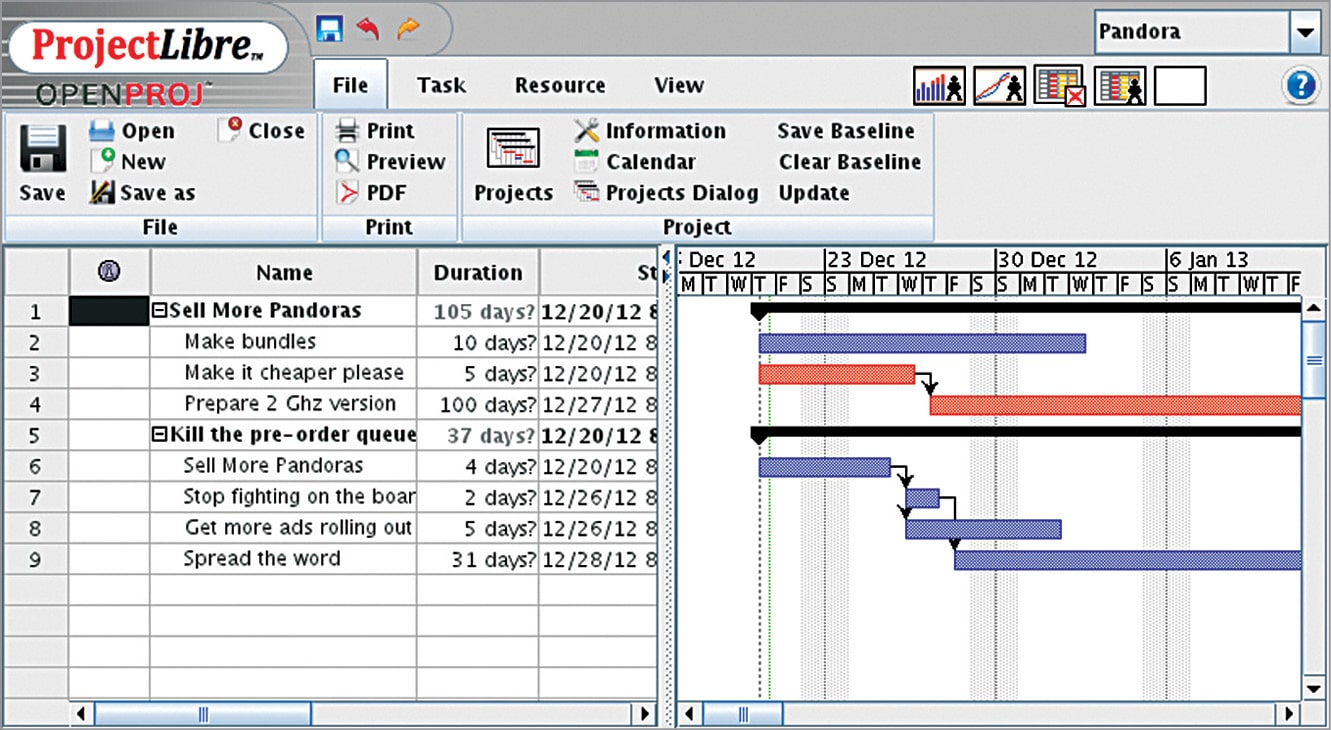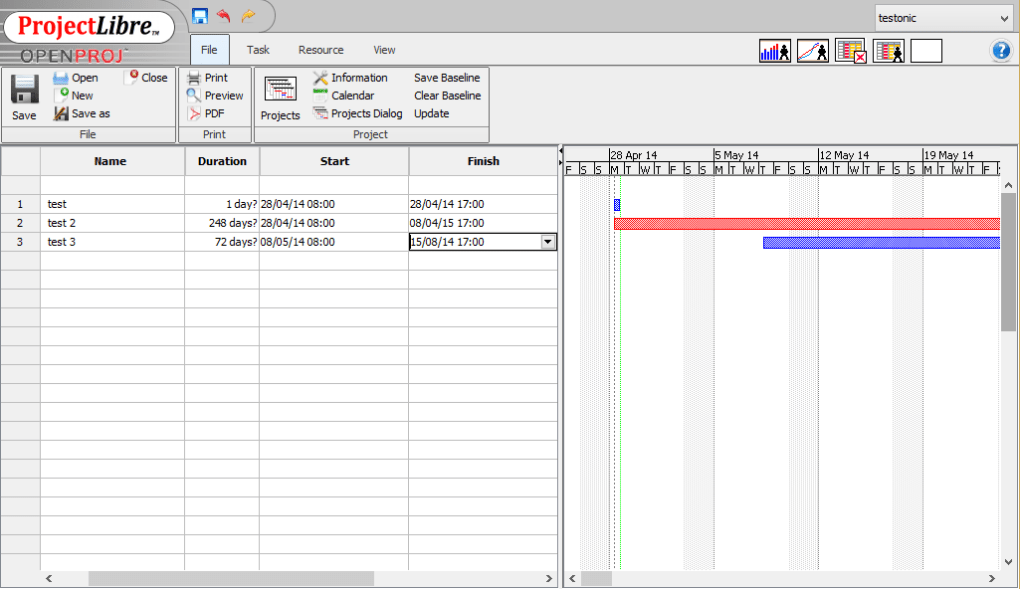

The length of tasks is also indicated in months: Thus, 1 means January, 2 means February, 3 means March and so forth. In the example below, I decided to plan PhD tasks for a year. Depending on the timeframe you want to showcase, you can opt for instance for Length (weeks) or Length (months).
PROJECTLIBRE TEMPLATES SERIES
Rename Series 1 into Start Date and Series 2 into End Date. You can use these columns to showcase the length of tasks. Next to the Categories (now tasks) column, you see three more columns: Series 1, Series 2, Series 3. You can add more categories or delete existing ones by removing a row in the small Excel table. For instance, Literature Review, Interviews, Transcribing and Analysis. You can replace categories with the PhD tasks that you want to display. The first column in the Excel table is called Categories. Select Bar (3.) and finally select the Stacked Bar option (4).Ī standard bar chart will appear on your slide and a small Excel table with open next to it. Then click on Insert (1.), then Chart (2.). Therefore, I will explain the process here.įirst, you need to open a blank PowerPoint slide. Manually creating a PhD timeline Gantt chart in PowerPoint is a bit easier than in Excel. When the project is saved and the extension is still *.POT, PL bring up the Save as dialog window, and default to current location ( before the template was opened) and ProjectName.POD as file name.Creating a PhD timeline Gantt chart in Microsoft PowerPoint Open the template project and go on with project creation / editing.

Default location is not current location, but projectLibre emplates and file types is *.POT, After a template is selected the next window is the standard New dialog window that force the user to give a name to the project (it may default to copyofTemplateName). New from template button in File group of File menu opens dialog window same as Open dialog, but is titled New from template. And some basic templates could be shipped with the installer in a templates folder. The community could then share their created templates with each other. The save as command should then also have a standard option to save as *.POT. POT would be a nice extension for Project Open Templates. It would make life easier if PL could do this, if it is such a small adjustment as I think it would be. It seems to me that working with a template is basically the same as opening and working from an existing project, with the added luxury, that when you close or save the file, PL sees the template extension, and prompt the user to rename the file (providing the default as the template's name with a standard POD extension) and thereby preserve the template. shut down, and start up tasks) so "create from template" can be quite useful. It does happen that we have recurring (annualy for instance) project types, of which a certain amount of task will always be the same (e.g. “Anual shut template”, and use the Open button to open it, and the Save as button to rename it, and preserve the template. PL does not seem to have the capability to create a new project from a template but, it will open a MS project template if you rename it from *.mpt to *.mpp To create your own templates, save an existing project as e.g.


 0 kommentar(er)
0 kommentar(er)
